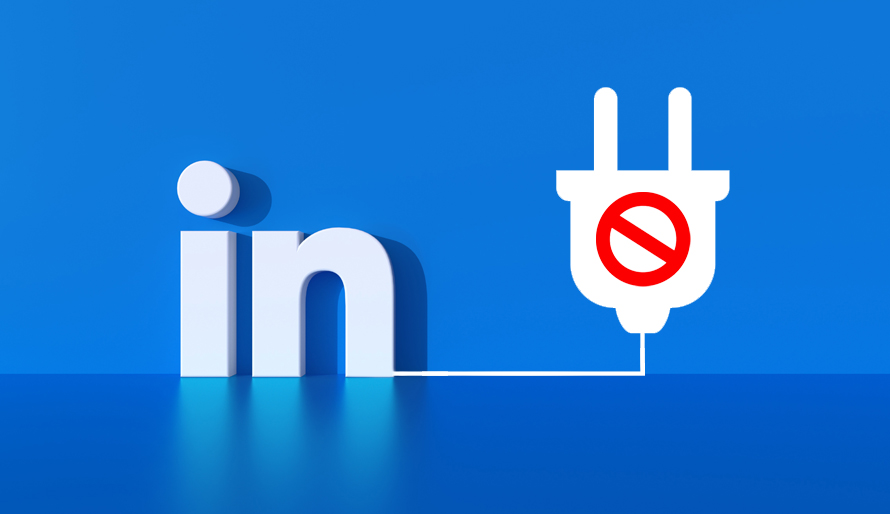LinkedIn is one of the crucial networking platforms that connect millions of professionals worldwide.
Users, in order to improve their LinkedIn experience, use extensions and mostly turn to Chrome extensions so that they can automate their tasks and streamline workflows.
However, the LinkedIn platform does not accept all extensions. Let’s dig deep to learn about banned LinkedIn extensions, the reasons behind their prohibition, and the risks they pose to your LinkedIn account.
Table of Content
Why has LinkedIn banned LinkedIn extensions?
LinkedIn has prohibited the use of certain extensions that violate its terms of service. These extensions actually automate actions on platforms such as scraping data and sending automated connection requests, which sabotage the platform’s integrity and can lead to account restrictions or suspensions.
Risks Associated with Banned Extensions:
. Account Suspensions:
If you use banned extensions, it will result in instant account suspensions or restrictions. LinkedIn is firm against automation and always actively monitors such suspicious activities.
. Data Privacy Concerns:
Banned extensions may collect and store user data without proper consent, raising serious privacy concerns. Your personal and professional information could be at stake if you use extensions.
. Security Vulnerabilities:
Banned extensions can pose significant security risks to both your browser and computer. They might contain malicious code that aims to steal sensitive data, thus jeopardizing the security of your system.
. Loss of credibility:
Using banned extensions can harm your credibility on LinkedIn. Employers and connections may consider you as unprofessional, suspicious or unethical.
Examples of Banned LinkedIn Extensions

Although LinkedIn doesn’t formally publish the list of prohibited extensions, the following extension types typically lead to the prohibition of certain types of extensions:
. Automation Tools:
Extension that automates tasks such as sending connection requests or messages.
. Data Scrapers:
Some extensions scrape data from LinkedIn profiles without permission.
. Engagement Bots:
There are extensions that artificially manipulate engagement metrics, such as likes or comments.
How does LinkedIn know you’re using extensions?
LinkedIn implements a range of detection methods to identify the regular use of extensions on its platform. These methods consist of both automated and manual techniques.
1. Browser Requests
When you use a Chrome extension on LinkedIn, it may ask for requests to LinkedIn’s servers.
By monitoring these requests and analyzing their patterns, LinkedIn can identify automated or unusual behavior, indicating the use of the extension.
2. JavaScript Code
The LinkedIn website contains JavaScript code that can seamlessly detect the presence of certain extensions. This code has the capability to detect the presence of specific extension files or resources, indicating the extension’s installation and activity.
3. Web Workers
LinkedIn uses web workers, a type of JavaScript that runs in the background, to examine user behavior. These web workers can detect patterns of activity that suggest the use of extensions, such as rapid, repetitive actions that are typical of automation.
4. User-Agent String
Your browser sends the user-agent string to websites to identify the browser and operating system you are using, and because of this, LinkedIn can detect modifications in the user-agent string, indicating the use of certain extensions.
5. Behavioral Analysis
LinkedIn can also perform behavioral analysis to detect activity patterns that are inconsistent with human behavior.
For example, if a user suddenly sends hundreds of connection requests in a short period of time, it may raise suspicion and prompt LinkedIn to conduct further investigation.
That’s how LinkedIn uses a combination of these techniques to detect the use of extensions on its platform.
In a nutshell
While Chrome extensions or any other extensions offer valuable enhancements to improve your LinkedIn experience, it’s crucial to use them responsibly. Avoid using banned extensions that violate LinkedIn’s Terms of Service, as they can have serious consequences for your account and reputation.
However, if your goal is to enhance your LinkedIn profile and reduce time spent on monotonous tasks, then try LinkedIn Helper, a powerful automation tool that can help automate tasks, generate leads, manage your profile, and run campaigns more efficiently.
Visit our website today to try LinkedIn Helper!















